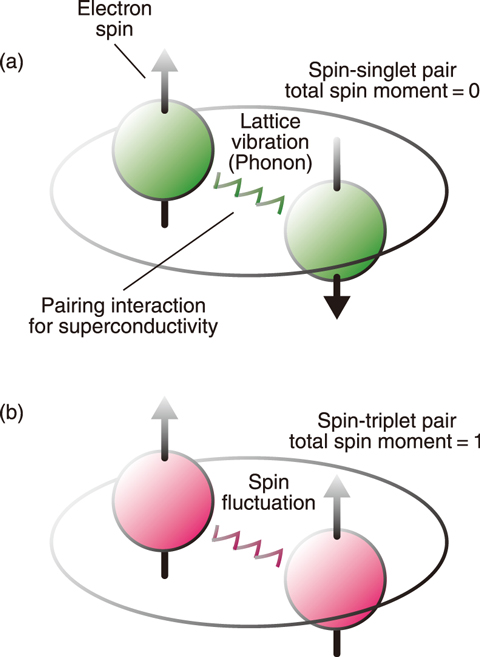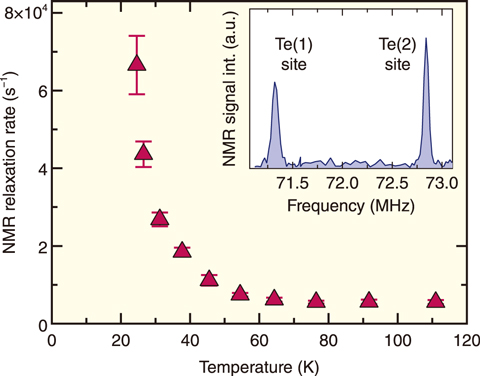
Fig.3-7 Two types of superconducting electron pairs

Fig.3-8 Temperature dependence of the NMR relaxation rate and the NMR spectrum
Uranium, known for its usage as a nuclear fuel, has recently attracted a great deal of attention in the field of basic research on superconductivity. After the first discovery of superconductivity in mercury by Kamerlingh Onnes in 1911, many new superconductors have been discovered, including copper oxide and iron-based superconductors. From these discoveries, it has become clear that the mechanism behind superconductivity is far more diverse than originally thought. Since 2000, a variety of unconventional superconducting phenomena have been found in compounds containing uranium. Investigating one such phenomenon has allowed for the detailing of the spin-triplet superconductivity present in uranium compounds.
The essence of superconductivity is that two electrons form a pair (i.e., a superconducting pair), with making collective motion in materials. As shown in Fig.3-7(a), in conventional, spin-singlet superconductors, the spins of superconducting pairs are all antiparallel and thus the total spin moment is equal to zero. On the other hand, in a spin-triplet superconducting state, the spins are parallel and the total spin moment is equal to one (Fig.3-7(b)). As a result, ferromagnetism and superconductivity, which has generally been considered as mutually exclusive phenomena, can coexist in the microscopic state in the spin-triplet superconductors. Furthermore, while a field will typically destroy superconductivity, field-induced superconductivity has been observed with spin-triplet pairs. In 2018, a new spin-triplet superconductor, UTe2 was discovered. Since then, a variety of unconventional superconducting phenomena has been found in UTe2. To reveal the origin of these phenomena, intensive studies are now being undertaken by researchers in Japan, in the United States, across the European Union, and in other countries.
In an effort to study the electronic states of UTe2 from a microscopic viewpoint, nuclear magnetic resonance (NMR) experiments using a single crystal were conducted. The observed NMR spectrum is shown in the inset of Fig.3-8; here, two NMR peaks are present, arising from the two inequivalent Te sites in a unit cell. Both peaks are very sharp, confirming the high quality of the single crystal. Using the observed NMR signal, the temperature dependence of the NMR relaxation rate, 1/T2, was measured and is displayed in Fig.3-8. The relaxation rate of 1/T2 is a physical quantity reflecting the strength of the magnetic fluctuations created by electron spins at the observed nuclear position. The measurements revealed the development of strong magnetic fluctuations along a specific axial direction of the crystal at low temperatures, where superconductivity appears. This implies that the magnetic fluctuations may create the attractive force of the spin-triplet pairing, as has been theorized since the 1980s. Recently, UTe2 has been suggested to have potential applications in next-generation quantum computing devices.
This study was conducted on “Understanding of the Superconducting Mechanism and Search for a Novel Superconducting State in Uranium Heavy-Fermion Compounds”, supported by the Japan Society for the Promotion of Science (JSPS) KAKENHI Grant-in-Aid for Scientific Research (S) (No.15H05745).
(Yo Tokunaga)